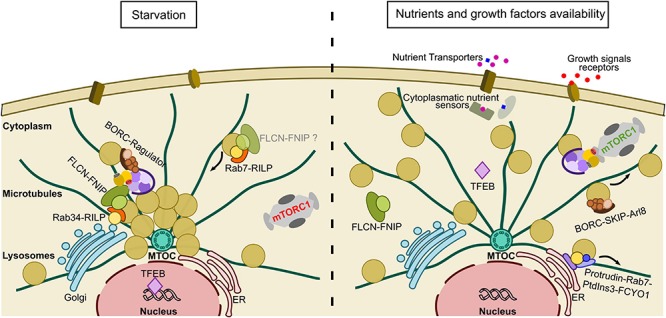FIGURE 3.

Lysosomal repositioning in response to nutrient availability. Under starvation conditions, mTORC1 activity is abolished and lysosomes cluster in the perinuclear region to favor catabolic processes such as autophagy. Lysosomal clustering around the nucleus is favored by FLCN-RILP-Rab34 contacts on the Golgi and the inhibitory BORC-Ragulator interaction. At the same time, TFEB is relocalized to the nucleus to favor lysosomal biogenesis. When nutrient levels recover, FLCN disperses from the lysosome and the BORC-Ragulator interaction is broken. Kinesin dependent pathways, such as PtdIns3-Rab7-Kinesin and BORC-Arl8-Kinesin, are promoted to favor dispersal of the lysosomes. In parallel, TFEB relocalizes to the cytoplasm, where it is non-functional. Nutrients promote the recruitment of mTORC1 to the lysosome through the Rag GTPases, which now occurs closer to the plasma membrane allowing full activation by growth factors through the Rheb axis.
